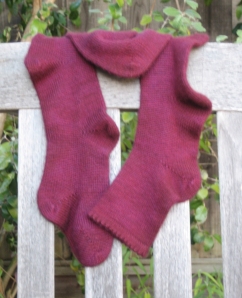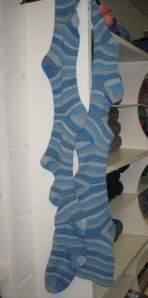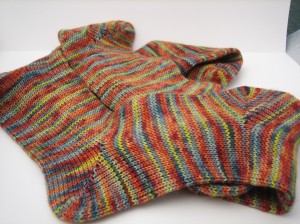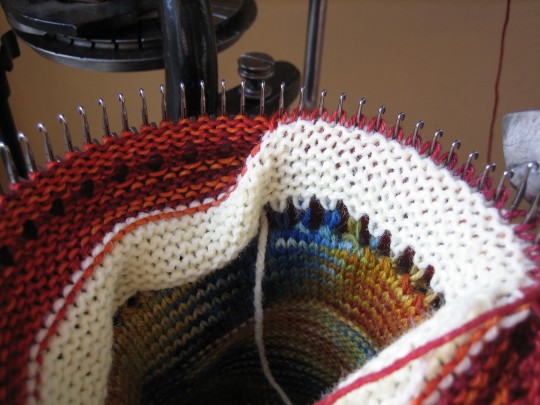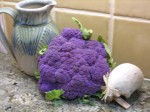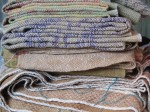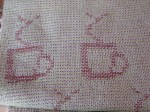I’m getting down to my last few pounds (!) of Angora yarn. Years ago I raised Angora rabbits. (Before Handwerks was officially a business.) I was going to insert a picture here but it was before I had a digital camera, yes back in the dark ages… so you will have to imagine what they look like. I had 4 white Giant/German hybrids (Fluffernutter, Harvey, Marshmallow and Snowball), one dark grey French (Midnight) and one English (Einstein) Angora rabbit. They are great animals but require a lot of care and attention as they are prone to some breed specific health problems. The Giant/Germans are big commercial sized rabbits and I would shear them periodically and save their silky long white hair. The French and English rabbits shed seasonally so I harvested their hair by a combination of plucking and combing. Within a short period of time I had more pounds of fur than rabbits! (and I also discovered that I had more rabbits on the way too…such as it is with rabbits) I soon found that my time was being taken up by tending the herd and I didn’t have enough time to spin up the fiber as well as take care of everything else. In 2002, I packaged up and sent off several large boxes of Angora fiber and merino fleeces to a wonderful business, http://www.fantasyfibers.com/ to have them process the fiber into yarn for me. I’ve been using the yarns since then.
I just pulled out the last skeins from Midnight blended with natural black merino in a 1:3 ratio.
 It’s a nice charcoal color and you can see the French Angora guard hairs poking out. Its soft and will full nicely when it’s washed. The yarn is 2 ply and about sport weight, 1220 yards/pound. I’m going to use it for weft. I could have used it for warp but I thought it might fuzz too much and I didn’t want to fiddle with sticky sheds.
It’s a nice charcoal color and you can see the French Angora guard hairs poking out. Its soft and will full nicely when it’s washed. The yarn is 2 ply and about sport weight, 1220 yards/pound. I’m going to use it for weft. I could have used it for warp but I thought it might fuzz too much and I didn’t want to fiddle with sticky sheds.
I warped the Gilmore, 46″ wide, 12 epi, with a commercial wool/alpaca DK weight yarn in a double two-tie threading.
and here it is close up:
and my progress so far, just beginning:
The warp is 3 1/4 yards long and I’ve left 8″ at the beginning to tie on and make into fringe at the end. I’ll just weave it off and leave enough warp for fringe at the other end.
The rabbits are long gone but it will be nice to remember and enjoy the memory of them when I have this blanket finished and want to curl up on the couch next Fall and WInter with a good book ar a fun knitting project. I’m enjoying weaving this and it’s exciting to have the bottom of the “Angora Yarn Box” in sight!







